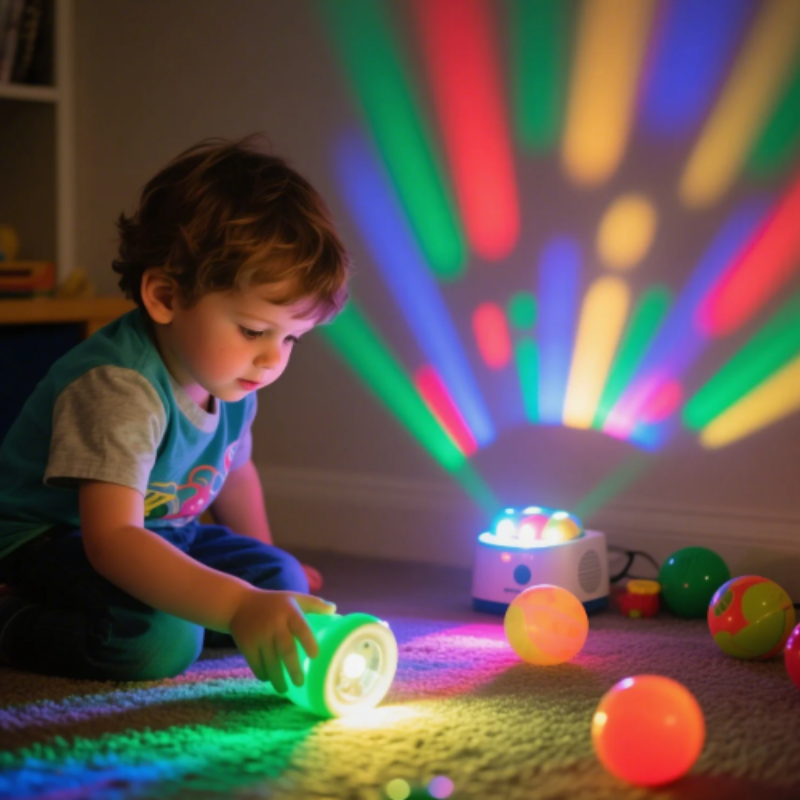Sensory play is a critical part of early childhood development. It offers preschoolers a fun and interactive way to explore their world while simultaneously helping to strengthen cognitive, motor, and emotional skills. By engaging their senses—touch, sight, sound, smell, and movement—children develop better focus, creativity, and social skills. In this blog, we will dive into the importance of sensory activities for preschoolers and share fun, engaging, and simple ideas that will keep them entertained while learning!
Understanding Sensory Play
What is Sensory Play? Sensory play involves activities that stimulate the five senses: touch, sound, sight, smell, and movement. These activities help children explore their environment and build connections with the world around them, laying a solid foundation for learning. Sensory play is not only fun but also beneficial to the brain, helping preschoolers to understand and organize sensory input, which enhances their overall development.
Different Types of Sensory Experiences
- Tactile: Activities involving touch (e.g., feeling different textures).
- Auditory: Sound-based activities that engage hearing (e.g., listening to music or nature sounds).
- Visual: Visual stimulation through colors, shapes, and light.
- Olfactory: Scents that engage the sense of smell.
- Vestibular: Movement-based activities to develop balance and coordination.
- Proprioception: Activities that help children become more aware of their body’s position and movements.
Sensory Activity Ideas for Preschoolers
Tactile Activities (Touch) Engage your preschooler’s sense of touch with hands-on activities that are both educational and enjoyable.
- Sensory Bins: Fill a bin with rice, pasta, sand, or even water beads. Add small toys or scoops for the child to explore and manipulate. Sensory bins are excellent for learning about texture and encourage fine motor skills like scooping, pouring, and digging.
- Playdough or Clay: Let your child squish, mold, and create with playdough or clay. These activities are not only calming but also great for strengthening hand muscles, improving dexterity, and fostering creativity.
- Textured Fabric Exploration: Collect different fabrics like velvet, cotton, or burlap and let your child touch and feel each one. They can compare how different materials feel, from soft to rough, and even create a sensory board with varying textures.
Auditory Activities (Sound) Help your preschooler fine-tune their hearing and auditory discrimination with these fun activities.
- Musical Instruments: Introduce your child to simple musical instruments like tambourines, xylophones, or maracas. Not only will they learn about rhythm and melody, but they will also develop their auditory processing and coordination.
- Sound Jars: Fill jars with different materials like rice, beans, or buttons. Have your child shake each jar and listen to the sounds. You can make this a guessing game by asking them to identify the sound based on the objects inside.
- Listening to Nature Sounds: Play recordings of nature sounds, such as rain, birds chirping, or ocean waves. Ask your child to identify the sounds or mimic them. This encourages both listening skills and focus.
Visual Activities (Sight) Visual stimulation is a great way to engage your preschooler’s sense of sight and promote their cognitive skills.
- Light-Up Toys and Projectors: Use light-up toys or projectors that create colorful patterns. This will captivate your child’s attention while teaching them about colors and shapes.
- Color Matching Games: Use flashcards, colored blocks, or toys to match and sort different colors. This enhances visual discrimination and helps with learning color recognition.
- Visual Tracking Games: Roll a ball or move a toy in front of your child, encouraging them to follow the movement with their eyes. This helps develop their ability to track objects visually, an essential skill for reading and writing.
Olfactory Activities (Smell) Olfactory experiences can create calming moments and build associations with various scents.
- Scented Playdough or Sensory Bins: Add a few drops of essential oils or cinnamon to playdough or sensory bins. Scents like lavender can have a calming effect, while citrus smells can energize and engage.
- Smelling Flowers or Herbs: Take your child outside and introduce them to different flowers and herbs like lavender, mint, or rosemary. Ask them to smell and describe the scents, enhancing their sensory awareness.
- Essential Oil Diffusers: Set up an essential oil diffuser in your playroom with soothing scents like chamomile or eucalyptus. The calming aroma can help children focus or relax, depending on the need.
Vestibular Activities (Movement) Movement-based activities help preschoolers improve balance and coordination.
- Swinging or Rocking: If you have access to a swing or rocking chair, let your child enjoy the calming effect of rhythmic movement. It helps with balance and can provide a sense of security.
- Balance Exercises: Set up a simple balance beam or stepping stones for your child to walk across. This will improve coordination and body awareness.
- Dancing or Jumping: Play some fun music and let your child jump, spin, or dance around. This promotes movement and rhythm, helping with motor skills and muscle development.
Proprioception Activities (Body Awareness) Proprioceptive activities help preschoolers understand how their bodies move and develop strength and coordination.
- Pushing and Pulling Objects: Encourage your child to push toy carts, pillows, or furniture. These activities help them develop strength and coordination.
- Obstacle Courses: Set up a simple obstacle course with pillows, tunnels, or soft furniture. Crawling and climbing help your child develop body awareness, coordination, and problem-solving skills.
- Jumping on Trampolines: If you have access to a small trampoline, let your child bounce around. This fun activity helps with balance, coordination, and muscle control.
How to Tailor Sensory Activities to Different Needs
Every child is unique, and sensory activities can be adapted to fit their individual preferences and needs. If your child is sensitive to certain stimuli, consider adjusting the intensity or choosing less stimulating activities. For example, some children might prefer calm and quiet sensory experiences, while others may enjoy more active play.
Additionally, create safe spaces for your child to retreat to when they need a break from stimulation. This could be a quiet corner with soft lighting and calming scents.
Tips for Successful Sensory Play with Preschoolers
To ensure your sensory activities are fun and effective, here are a few tips:
- Keep it Simple: Preschoolers thrive with simple, hands-on activities that allow for free exploration. Avoid overwhelming them with too many instructions or complicated setups.
- Encourage Creativity: Let your child lead the way during sensory play. Encourage them to use their imagination and explore the materials in their own way.
- Provide Sensory Breaks: Sensory play can be stimulating, so make sure to allow breaks when needed. This will help your child manage sensory overload and stay engaged in the activity.
Conclusion
Sensory play is a powerful tool for preschoolers to explore their senses and develop essential skills for learning. From tactile activities to movement-based play, sensory experiences help children strengthen their cognitive, motor, and emotional abilities. By incorporating these fun sensory activities into your child’s daily routine, you’re supporting their growth while providing them with an engaging and enjoyable way to learn!





